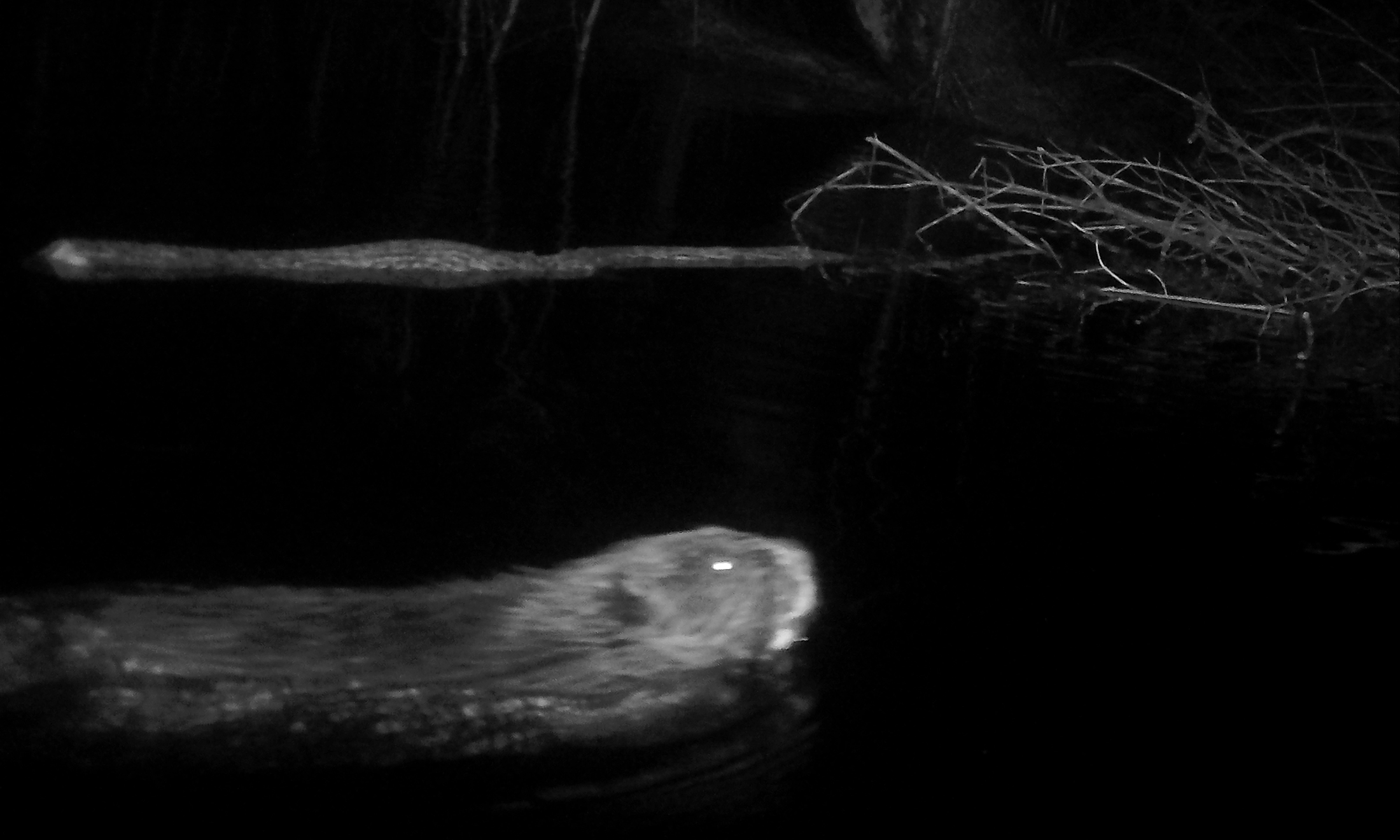Researchers optimistic after beaver sighted on OU campus
A recent beaver sighting on the campus of Oakland University has researchers optimistic about what the animal’s return to the OU Biological Preserve could mean for the ecosystem.
“Having a beaver in the Preserve suggests an important increase in biological diversity, which they help facilitate, and is incredibly important considering our Preserve is one of the few remaining large patches of native habitat in the area,” said Dr. Sandra Troxell-Smith, a special lecturer in the Department of Biological Sciences at OU.
“From a biological perspective, we are thrilled about this discovery,” Troxell-Smith added. “We can document and witness first-hand the effects of the beaver returning to the area on other species, and their impacts on overall biodiversity and the ecosystem.”
Dr. Thomas Raffel, an associate professor of biological sciences at OU, said the presence of beavers on OU’s campus represents a unique opportunity to study beaver foraging ecology.
“Beavers are ecosystem engineers whose wetlands and meadows used to dominate many North American stream systems,” Raffel said. “Their activities create habitats for hundreds of other species, including red spotted newts. Beavers are often considered pests, but they provide important benefits like moderating floods and droughts, purifying water, sequestering greenhouse gases, and increasing landscape biodiversity.”
Once plentiful in southeast Michigan, extensive hunting and habitat loss in the area in the 1800s caused their near extinction.
“Beavers have been slowly coming back to the area, and while some faculty in our department have previously noted evidence of beaver in the preserve, such as chewed trees, we weren’t able to locate a dam or a beaver lodge until now,” Troxell-Smith said.
Troxell-Smith began monitoring the beaver population in December 2023 after a fellow faculty member mentioned that they had noticed flooding in the preserve and discovered a dam nearby.
“I then placed several cameras in the area to document activity, including the beaver’s lodge or ‘home,’” she said. “Thus far, only a single beaver has been present in the images/videos at a time, so we are still unsure whether there is more than one or not. Beavers are a species that lacks sexual dimorphism, so males and females are very hard to distinguish. Hopefully continued monitoring will answer that question for us soon.”
Since the beaver was first observed in the OU Preserve, faculty from the Biological Sciences and English departments — with assistance from the Native American Advisory Committee — have been working together to understand the needs of the beaver, and are in active discussions with various departments on campus to come up with a solution that best serves the beaver and the greater OU community.
“We’re eager to learn or remember how to co-exist with the beaver,” said Andrea Knutson, an associate professor of English at OU. “We need to figure this out for the health and well-being of a multi-species future that will benefit our planet. It was their commercial value that nearly wiped this species out, and I’d like to see if we can learn how to respect this incredible creature, welcome them home, and make space for them.”
Knutson is also co-chair of the Native American Advisory Committee and has been working with Ashleigh Dubie (tribal affiliation Cherokee), a former OU student and IB Literature teacher at International Academy Okma in Bloomfield Hill, Mich., to monitor beaver activity in the OU Preserve.
“The beaver – Amik in Ojibwe — is a sacred animal relative that we can learn from and have a reciprocal relationship with,” Dubie said. “By monitoring its impact on the environment it has decided to now call home we should in turn be making decisions to help the beaver thrive, as we are currently trying to do. This is what Indigenous relationships with the environment look like and have looked for thousands of years — scientifically proven relationships that indicate reciprocal care. We — Native and non-Native community members alike — are lucky to bear witness to this on OU’s campus.”
For more information, visit www.oakland.edu/biology/preserve. You can also enjoy a video of the beaver on the OU campus, as well as photos of other wildlife in the OU Preserve.


 February 01, 2024
February 01, 2024







